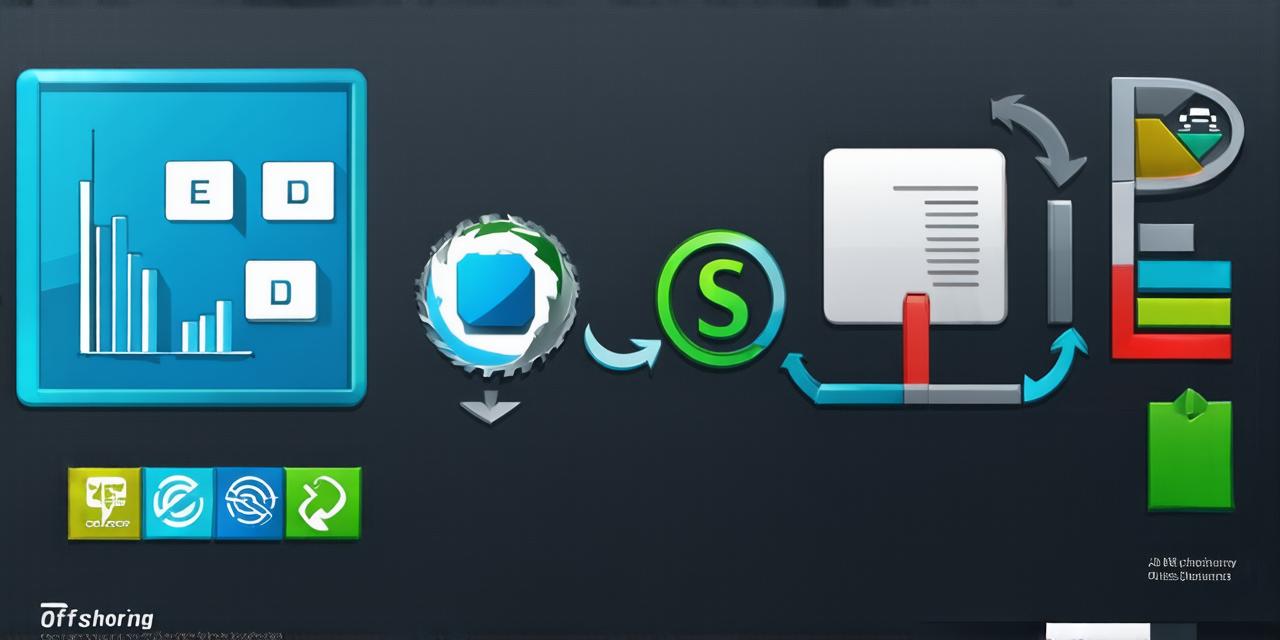Offshoring vs outsourcing difference
Offshoring vs Outsourcing: What’s the Difference?
If you’re considering outsourcing your business operations to a third-party provider, there are two main options you need to consider: offshoring and outsourcing. While these terms are often used interchangeably, they actually refer to distinct processes that have different implications for businesses.
Offshoring vs Outsourcing: What’s the Difference?
Offshoring refers to the process of moving part or all of a company’s operations to a different country, usually in a low-cost region where labor costs are lower. Offshore workers typically work for the same company as the onshore team but may be located in a different country.
Offshoring vs Outsourcing: What’s the Difference?
On the other hand, outsourcing refers to the process of delegating specific business tasks or functions to a third-party provider, usually based in the same country or region. Outsourcing providers are responsible for performing these tasks and delivering them back to the business owner.
Offshoring vs Outsourcing: Which is Better for Your Business?
Both offshoring and outsourcing have their advantages and disadvantages, and which option is best for your business depends on a variety of factors. Here are some key considerations to help you make an informed decision:
Cost Savings
One of the primary motivations behind offshoring and outsourcing is the potential to reduce costs. Both processes can help businesses save money by reducing labor costs, allowing them to hire workers in countries with lower salaries.
Time Savings
Offshoring and outsourcing can both help businesses save time by reducing their workload. By delegating specific tasks or functions to an offshore or outsourcing provider, you can focus on more important aspects of your business, such as growth and development.
Quality of Work

The quality of work provided by offshore or outsourcing providers can vary widely, depending on a variety of factors such as the provider’s experience, expertise, and communication skills. It’s important to carefully vet potential providers to ensure that they have the necessary skills and experience to deliver high-quality work that meets your business needs.
Flexibility
Offshoring and outsourcing both offer varying levels of flexibility, depending on your business needs. Offshoring can be particularly flexible, as it allows you to move entire operations to another country or region, giving you access to a larger pool of talent and resources.
Communication
Effective communication is critical to the success of any offshoring or outsourcing project. If communication breaks down between you and your provider, it can lead to misunderstandings, missed deadlines, and ultimately, poor-quality work.
Risk Management
Offshoring and outsourcing both come with varying levels of risk, depending on a variety of factors such as cultural differences, legal issues, and quality of work. It’s important to carefully evaluate these risks before deciding which option is best for your business.
Case Studies: Offshoring vs Outsourcing
To better understand the difference between offshoring and outsourcing, let’s examine some real-life examples of businesses that have successfully implemented both processes.
Offshoring Example: Automotive Parts Manufacturer
A leading automotive parts manufacturer decided to move its manufacturing operations to a low-cost region in China, where labor costs were significantly lower than in their home country. The company worked with an offshore partner to set up a new production facility and manage the transition of their operations from the US to China.
Offshoring Example: Automotive Parts Manufacturer
The offshoring process was successful, as the company was able to reduce its manufacturing costs by 30% while still maintaining high-quality standards. Additionally, the company gained access to skilled workers who were able to produce parts more efficiently than in the US. However, the offshoring process was not without challenges, as language barriers and cultural differences created misunderstandings and delays that needed to be managed carefully.
Outsourcing Example: Software Development Company
A software development company decided to outsource its development work to a provider based in India, where they had access to highly skilled developers at a lower cost than in their home country. The company worked closely with the outsourcing provider to ensure that communication protocols were established from the outset of the project and that deadlines were met.
Outsourcing Example: Software Development Company
The outsourcing process was successful, as the company was able to deliver high-quality software on time and within budget. Additionally, the company gained access to a large pool of talented developers who were able to work collaboratively with their in-house team to ensure that all project requirements were met. However, the outsourcing process also required significant upfront investment in establishing effective communication protocols and ensuring that the provider had the necessary resources to deliver high-quality work.
Summary
Offshoring and outsourcing are two distinct processes that can offer varying levels of cost savings, time savings, quality of work, flexibility, communication, risk management, and more. The choice between offshoring and outsourcing ultimately depends on your business needs and the specific goals you hope to achieve. By carefully evaluating each option and examining real-life examples, you can make an informed decision that will help your business succeed in today’s competitive marketplace.
